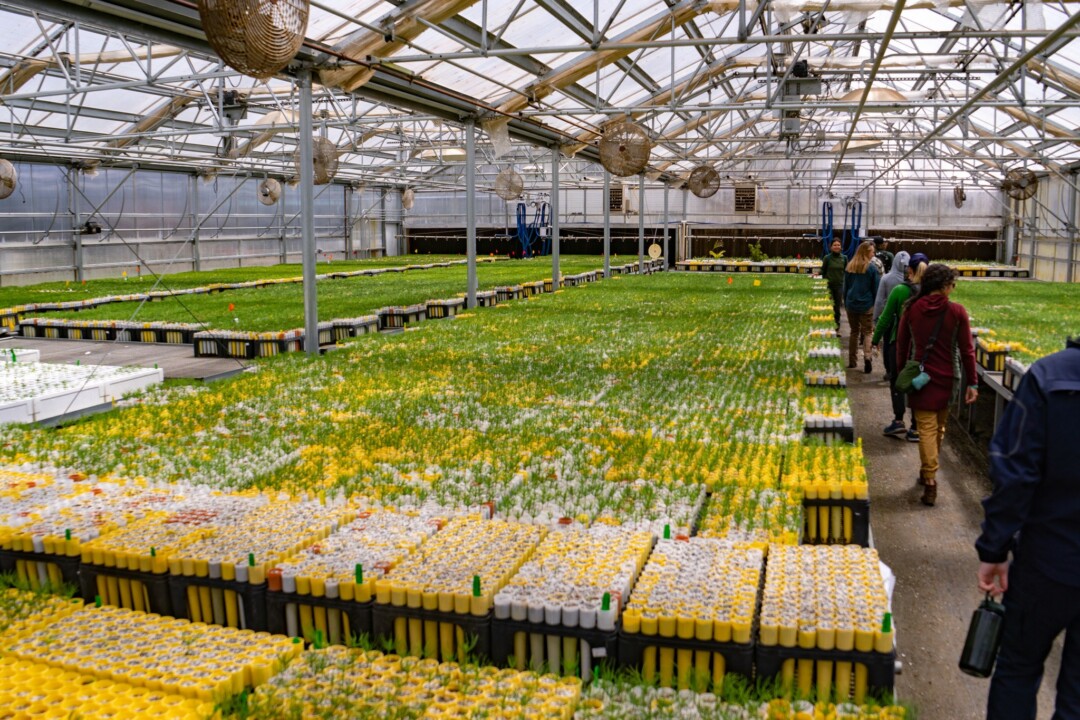California has a dire need for seed, and our Sierra Corps Forestry Fellows and Sierra Nevada AmeriCorps Partnership (SNAP) Cone Corps members are working with American Forests to help fill this need. The annual conifer reforestation cycle starts with the survey and collection of cones in the Summer, followed by seed extraction from the cones in the Fall. Cones are processed and seeds are stored until they are ordered and ready to be used. When seeds are ordered, the process of breaking dormancy is started in the Winter. Seeds are sown in the Spring, so the seedlings can be utilized later. Seedlings (one-year-old trees) are planted in the Spring when the snow melts or in the Fall when the rain begins.
The window for cone collection is relatively short, at around two weeks, so forestry project managers must plan by going out to the forests and surveying and monitoring trees for viable cone crops. The Cone Corps members are a critical part of this effort, spending hours in the field searching for cone crops.
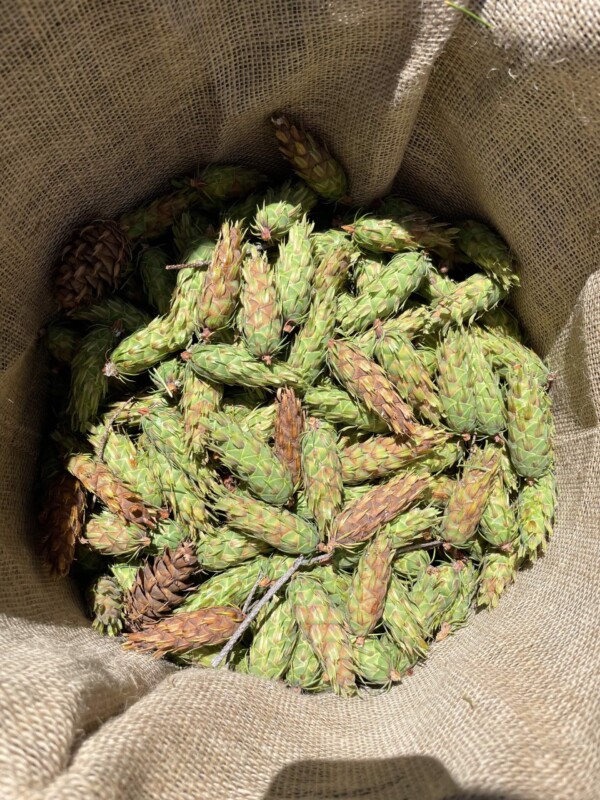
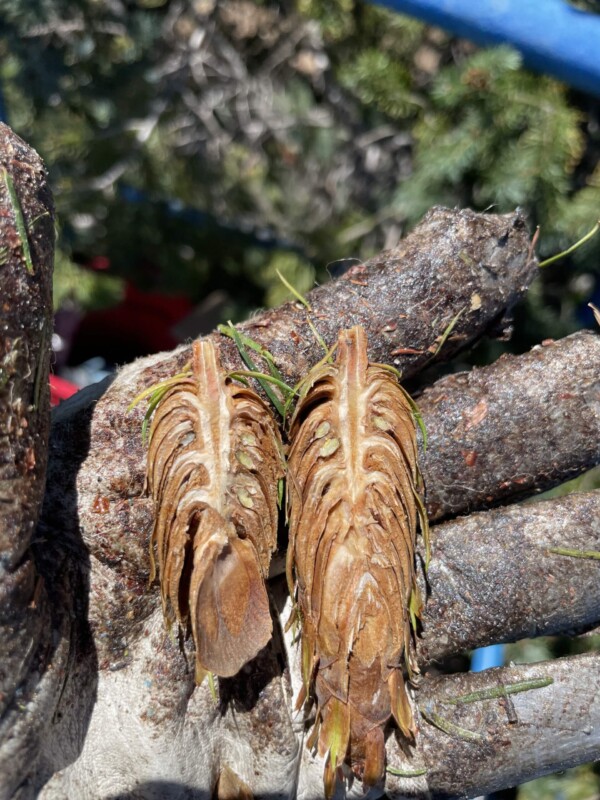
Monitors periodically check the maturity and quality of the cones by cutting a sample cone open and evaluating it. This helps them determine when they can send climbers to collect the cones. Cones are collected in 1-bushel bags and sent to the nursery to be processed, stored, and grown before being sent back into the forest for replanting. Much of the planting projects are done on high-severity burn scars, where the land is at risk of not returning to its former forested diversity. After a fire, many burn scars convert into shrublands rather than becoming healthy forests again.
Seeds can’t be planted in just any location, so it’s necessary to track where each seed comes from. Seeds are categorized by species, seed zone, and growing elevation. Typically, seeds don’t stray from their original seed zones due to the common conditions where trees have been adapted to grow for centuries. Ensuring a seed is planted in an environment similar to where it came from, especially its elevation, is essential in order for the seed to grow most optimally.
The two main nurseries that grow trees for reforesting California are the Lewis A. Moran Reforestation Center, which is the CAL FIRE reforestation center, and the Placerville Nursery, which is a USDA Forest Service nursery, both in northern California. The Placerville Nursery houses the seed bank for all of California’s National Forests.
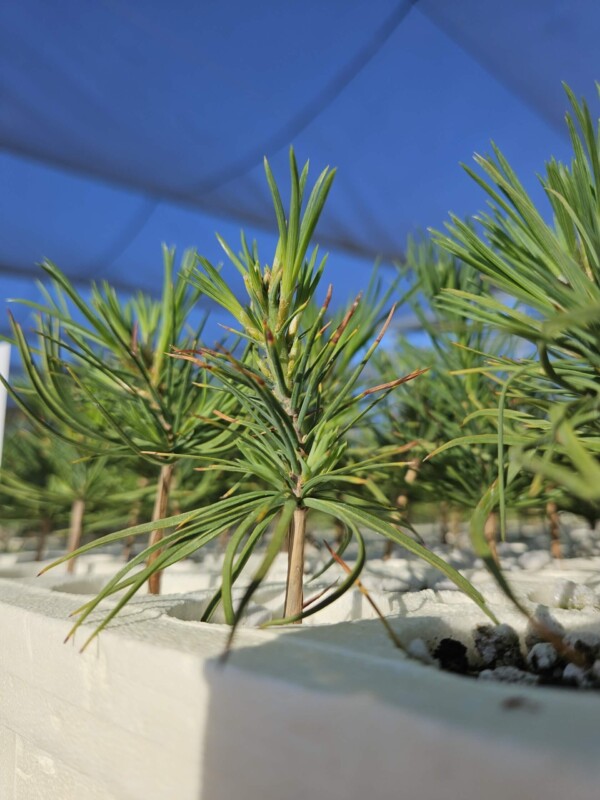
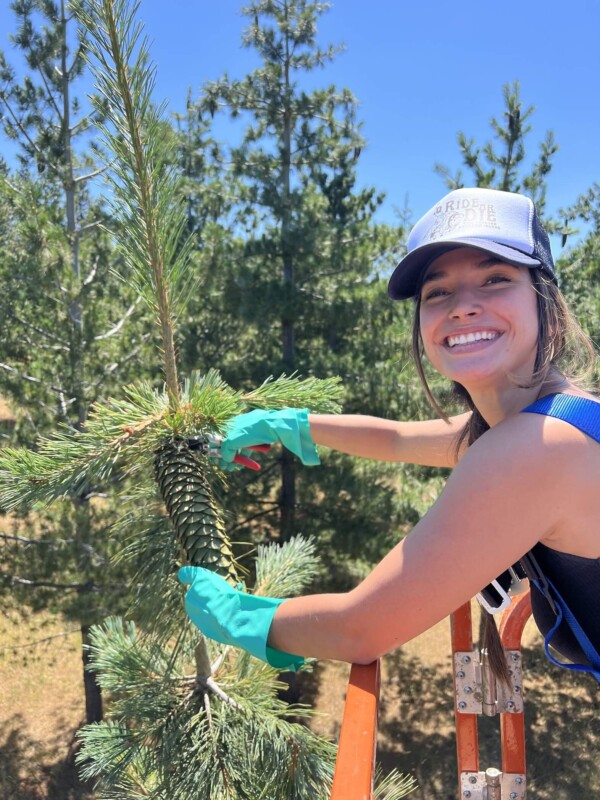
American Forests is a national nonprofit that helps to address the pinch points that make reforestation work challenging among agencies and organizations. They encourage collaboration and advocate for change and resources to strengthen and scale up reforestation and coordinate Cone Corps members for this important effort. Through the Reforestation Pipeline Partnership, American Forests is addressing challenges to California’s need for accelerated reforestation. We take great pride in our collaboration with American Forests and our efforts to promote healthy and resilient forests in California.
Funding for Sierra Corps provided by the California Department of Forestry and Fire Protection’s Business and Workforce Development Grants, and is supported by Tahoe Truckee Community Foundation’s Nature Fund and Martis Fund – a collaborative project of Martis Camp landowners, DMB/Highlands Group (the developers of Martis Camp), Mountain Area PreservationFoundation (MAP) and Sierra Watch.

